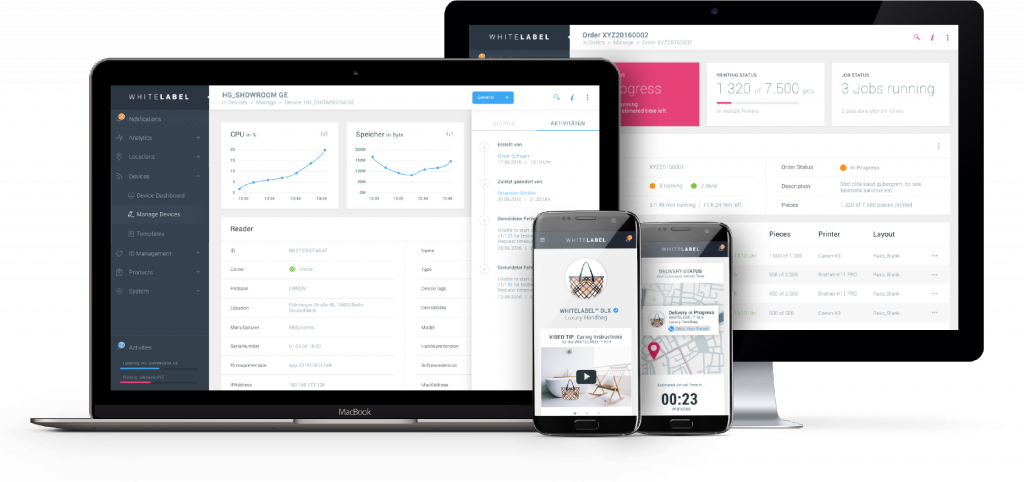Of course, every crisis is an opportunity. And of course, after the crisis, the winners are those who have already set the stage during the crisis.
In our new reality of reduced global, social and physical contact, the Internet has become (even) more important and emerged as the most important interface for information and interaction – between people and, indeed, between brands, products and consumers.
Overnight, boundaries have been shifted in many industry sectors: Brands with an established digital strategy now have a significant new competitive advantage. Brands without a digital strategy, on the other hand, are in a state of emergency. Missing investments and overdue generational changes of the last years now lead to disproportionate efforts and costs in managing the changed situation.
Insert: By ‘digital strategy’ we do not mean the new company website that the brand agency implemented after a year of planning for a six-figure sum. Digital strategy means a paradigmatic application of information technology that will permeate all areas of the company and all processes. We’re talking about the creation of a seamless digital infrastructure and agile and efficient working methods derived from it internally, as well as digital-based communication and interaction with partners and customers externally.
The exceptional situation is polarizing: Brands that already “breathe” digital in all areas of their business thus have control and influence to further assert themselves in the market. And they benefit compared to all the non-digitized brands with their high dependence on stationary business, interrupted global supply chains and lack of digital interfaces. Every process in the value chain is under review under these changed conditions – production, logistics, retail and services for end customers.
Smart products in production
Those who already record digital tracking points during the manufacturing process can now react to changes in supply and demand faster than others, even if production sites are distributed worldwide. This not only saves expensive reaction time, but also costs in subsequent logistics, retail and marketing processes.
Smart product applications in logistics
When well-established processes in global logistics change dramatically due to transport and travel restrictions, years of experience and familiar procedures are useless. Manufacturers and retailers who have established seamless digital supply chains with all their logistics partners, carriers and distributors now retain control over changing routes and times. Retailers and consumers can thus continue to be supplied reliably and in line with demand.
Omnichannel in retail
How do consumers react when shopping habits have become dead ends? What is the key now? For example, research online and pick up in the store. But are the opening hours right? Is availability reliable? When in doubt, how quickly will they deliver? Shopping for some inspiration is out entirely. And artificial scarcity of everyday products creates stress!
But something important doesn’t change: customers remain “omnichannel” in their thinking and actions, even if retailers can’t meet their usual expectations. Customers’ paths from desire to purchase are adapting, and this profits retailers who are omnipresent in the changing landscape of touchpoints:
- The “We are open” sign on the store window, with phone number and web address, of course.
- Research and ordering online, not only on the website, but also via Facebook and Instagram
- Self-collection and delivery in the local area, if necessary self-organized
- Adjusted opening hours, communicated in all channels, including on Google
- Regular communication with customers, informative and emotional
Retailers who adapt and apply these rules to their business, learning and optimizing as they go, are now benefiting at the expense of competitors who rely on “Business As Usual” or go on company vacations to cut costs.
New customer loyalty
When many of the certainties of everyday life are on hold, the Internet is even more often than usual at the beginning of even everyday decisions. Consumers are quickly seeking the line of least resistance to the goods and services they want, optimizing their daily lives based on available options. Manufacturers and retail brands that have maximum presence and maximum transparency will continue to sell now and build valuable customer loyalty that will sustain this exceptional situation.
The Smart Product Opportunity
In each of the four areas – production, logistics, retail and customer loyalty – lies a Smart Product opportunity that has become more significant than ever in the current exceptional situation.
Digital supply chains increase predictability in production and logistics through real-time data available globally. Cloud-based Smart Product Services increase the accuracy of this data down to the individual item within a shipment. This data, being available in a standardized format and online, becomes available to retailers and end customers.
In the race for the end customer, brands and retailers with smart products have a unique competitive advantage: whether it’s organic milk, hand-washing soap or vacuum cleaners, the product itself becomes the shortest way to communicate with the customer.
In retail and at home, smart product services always lead the user directly to the desired destination, depending on the location, time, and condition of the individual item: instructions for use, repurchase, refill, repair, coupons, recommendations … the entire range of services, sales-promoting measures, and customer loyalty can be accessed and activated at each individual consumer item outside of tangled, costly, and fragmented marketing channels thanks to smart products.

GoodsTag’s Smart Product Services Platform
Appendix 1: How do smart products work?
To access the digital copy of a consumer product, one scans its unique QR code or activates the NFC chip with any smartphone. The phone brings up a mobile web page with all the information and interactions the manufacturer is providing for that exact product at that moment.
Appendix 2: How to make products smart?
One creates a smart product in two simple steps. First, a digital identity is created for each item. To put it simply, this is an entry in an Internet database that contains product information and records any events in the item’s life.
Then, the real item is inseparably linked to its digital identity. To do this, a unique code is attached to the item, for example in the form of a QR code, an NFC/RFID chip or any combination. Depending on the planned use cases, the code is attached to the product itself, the label or the packaging.
A cloud-based smart product services platform, for example from GoodsTag in Berlin, is used to create and control all smart product activities. This makes the relationship between product and customer as unique as the customer himself.

